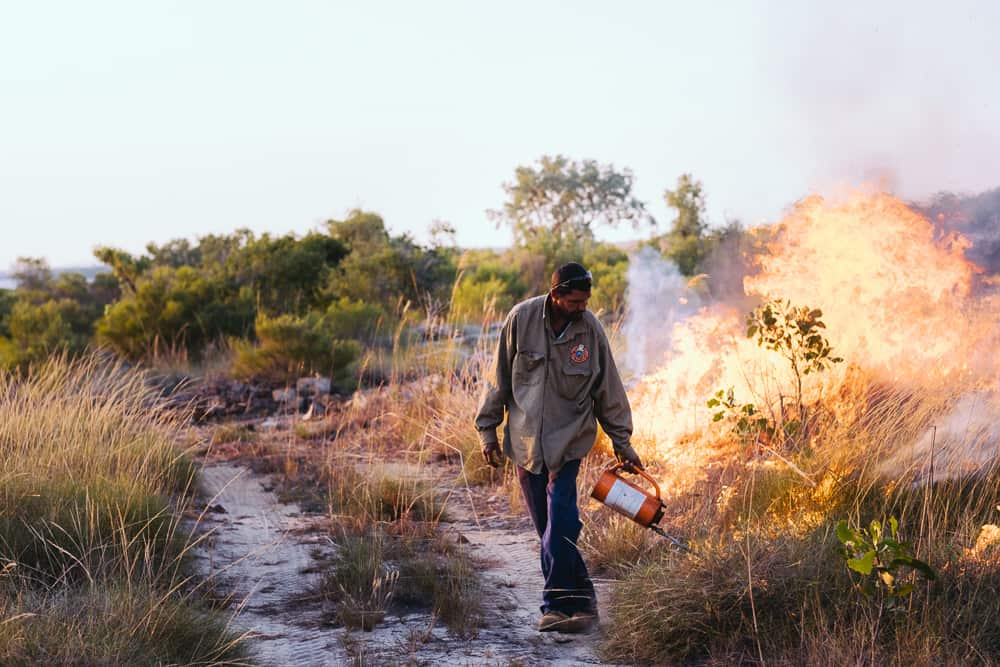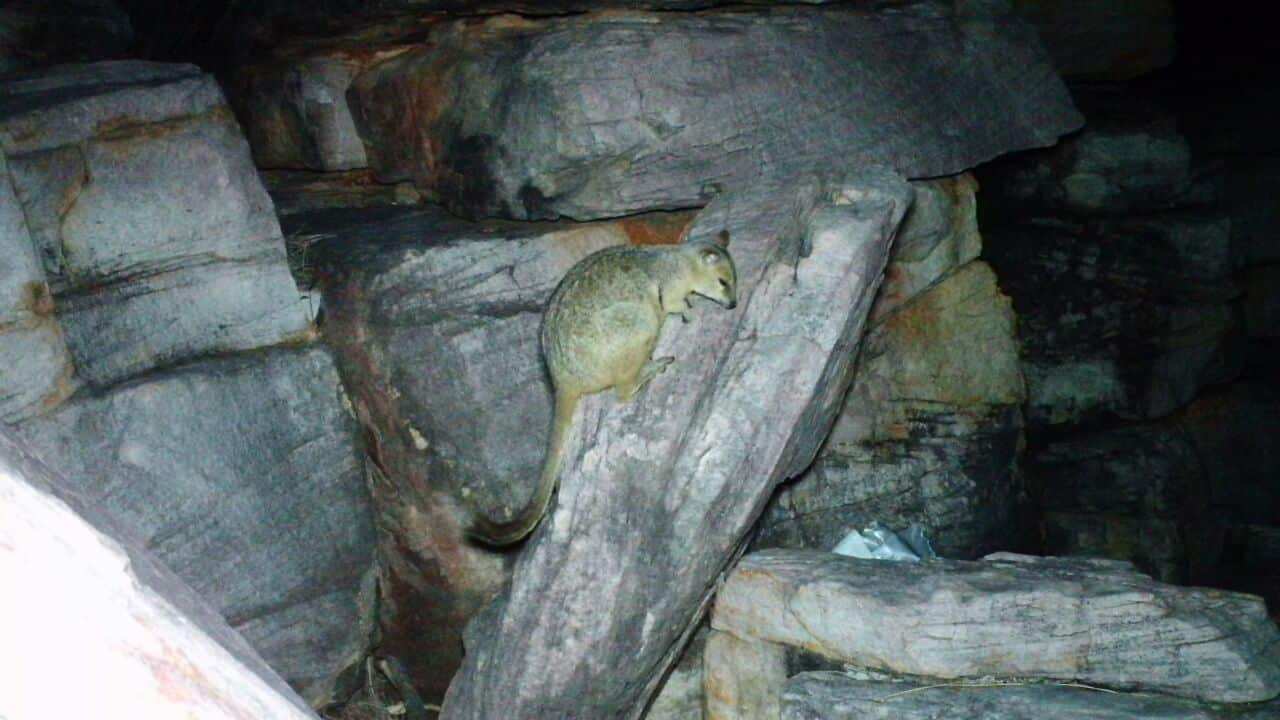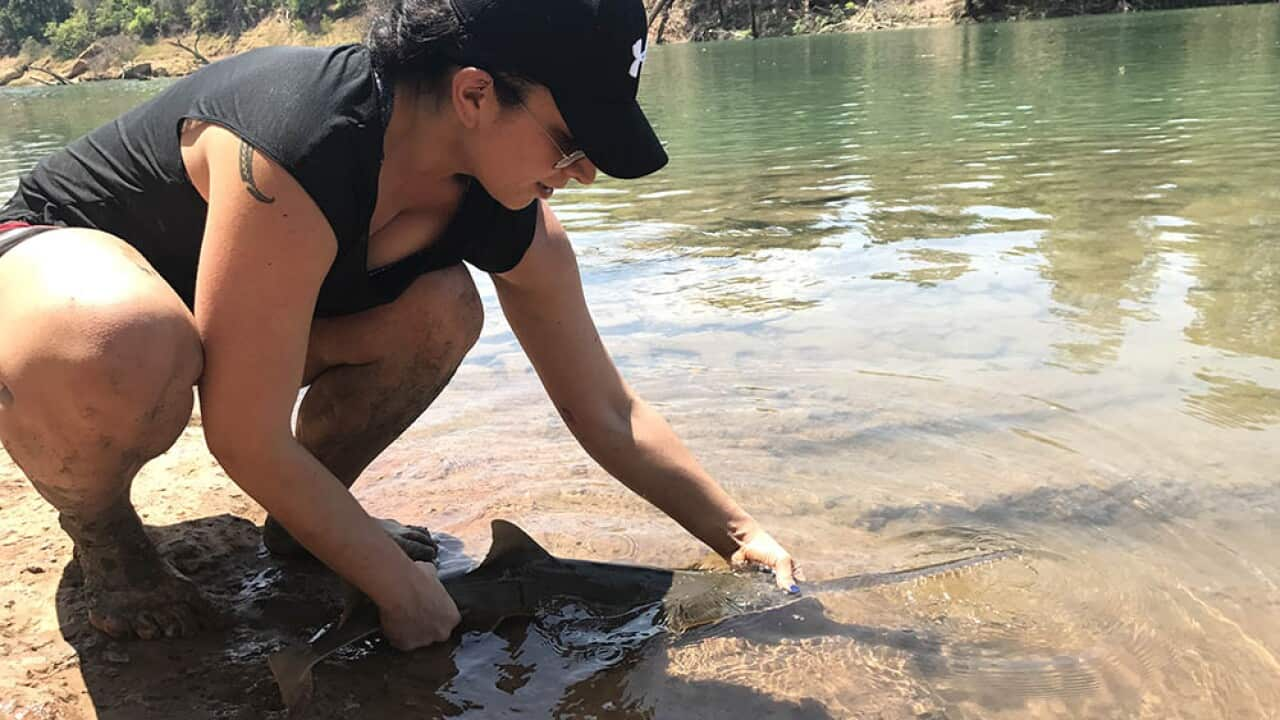Little pellets of poo found in the far north of Western Australia have Traditional Owners and scientists hopping with excitement after it was confirmed they belong to an endangered species of rock wallaby believed extinct on the mainland.
Head Uunguu Ranger Neil Waina said Wunambal Gaambera people were excited to discover nabarlek populations on their lands.
"To finally discover nabarlek still living on the Kimberley mainland after so many years of thinking they may have gone is a great boost for us and the work we are doing to keep our country healthy and intact," Mr Waina said.
He credited a "right-way" burning project, which reduced the number of damaging burn-offs across Wunambal Gaambera country, for the safe return of the species. Australian Museum scientists in Sydney confirmed the find after they analysed DNA of rock wallaby scat collected by Uunguu Rangers, from the Wunambal Gaambera Aboriginal Corporation, in the Vansittart Bay area near Mungalalu Truscott Airbase.
Australian Museum scientists in Sydney confirmed the find after they analysed DNA of rock wallaby scat collected by Uunguu Rangers, from the Wunambal Gaambera Aboriginal Corporation, in the Vansittart Bay area near Mungalalu Truscott Airbase.

Uunguu ranger undertaking fire management in the Kimberley. Credit: Russell Ord, Wunambal Gaambera Aboriginal Coorporation. Source: Supplied
About the length of a school ruler, the furry grey critter is the nation's second smallest rock wallaby, distinctive for its light brown, brush-tipped tail and a black stripe which runs from forehead to nose and under its eyes.
The nabarlek was thought to only survive on several offshore islands, where it was safe from fire, feral animals and grazing threats.
A healthy population of the nocturnal marsupials was confirmed in 2016 to be living on an island off WA, in Wunambal Gaambera Country, after wallaby scats were found by rangers in a Lotterywest and World Wildlife Australia funded project.
Isolated sub-species of nabarlek could also be roaming the Northern Territory, but evidence has not been recorded for many years.
Rangers will now photograph the nabarlek with camera traps and plan to conduct further research to determine the size and spread of the Kimberley population.
AAP












